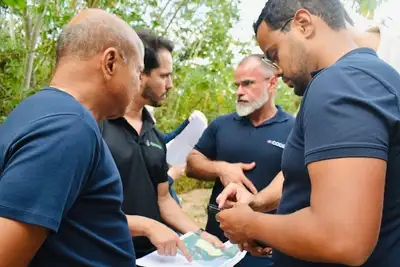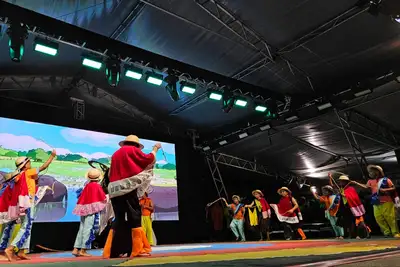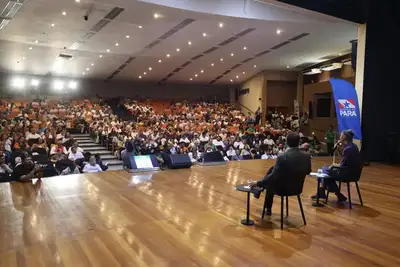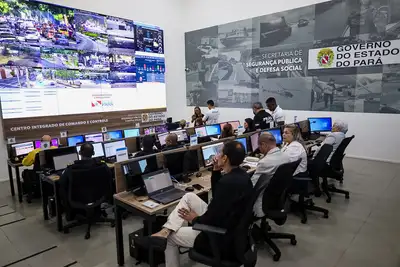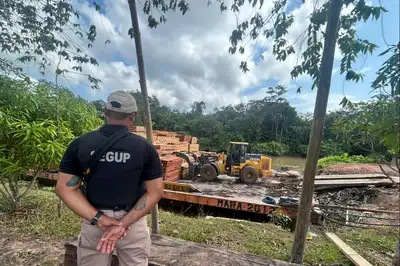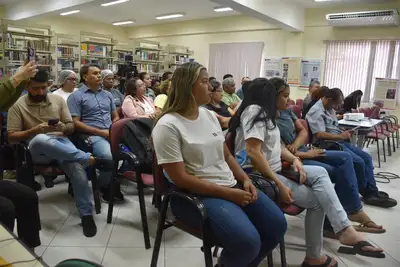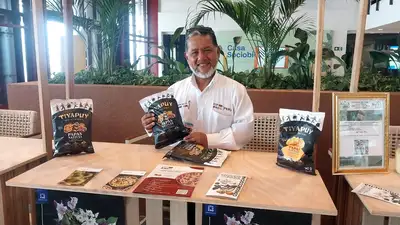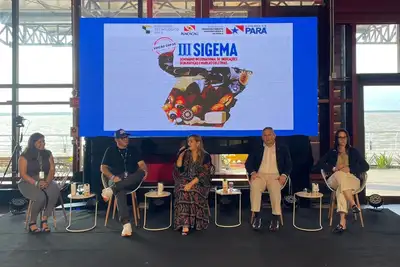Discover the stories of art and social transformation from the artist mothers of Curro Velho
Behind the vibrant colors, lines, and needles in the workshops at Curro Velho, there are women who transform their own pain into strength and inspiration
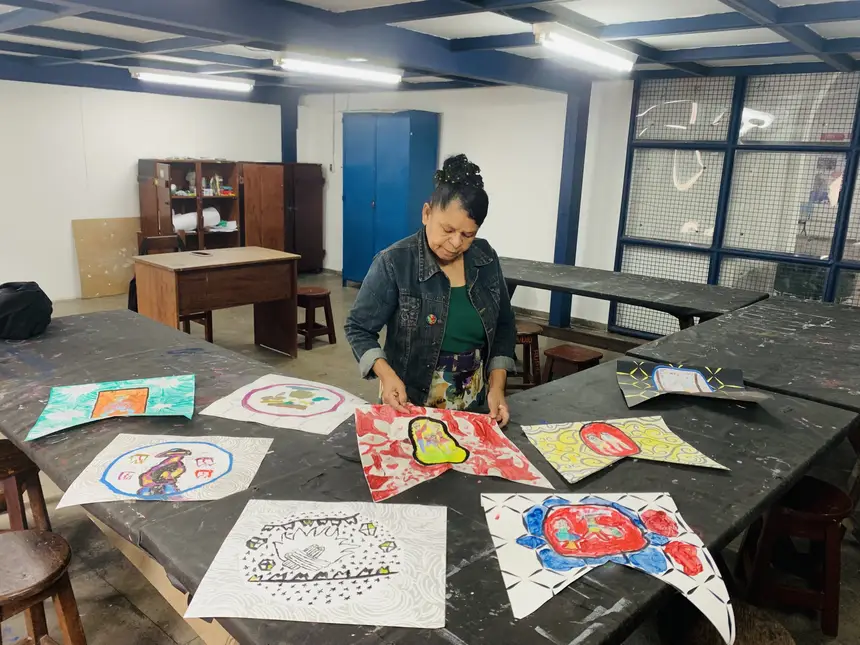
Among canvases, paints, and memories, artist Maria José found more than a craft: she discovered a path to healing. A resident of the outskirts of Belém, she began her artistic journey in 1997 by participating in painting workshops promoted by Curro Velho. Since then, her talent has crossed borders, and her works have reached Germany, the United States, Switzerland, Argentina, and several Brazilian capitals.
Awarded in various competitions and grants, Maria José possesses a unique artistic style that expresses Amazonian experiences through colors. And it all started in the workshops at Curro Velho, and from there, she never stopped. She has exhibited in the main galleries of Belém, such as Galeria Elf and Theodoro Braga, at the headquarters of the Cultural Foundation of Pará, in the Nazaré neighborhood of Belém.
Maria José has also been awarded grants from institutions like Banco da Amazônia, Branco de Melo, and the Tomie Ohtake Institute, where she was among the 10 selected women out of more than two thousand applicants.
But not all colors were easy to paint. In 2013, Maria faced difficult moments, suffering from depression after the death of her daughter, a victim of femicide. The tragedy interrupted her artistic production and plunged the artist into deep mourning. “The colors disappeared from the planet. I only saw black in front of me,” she recalls, emotional.
It was the support of friends and her youngest son, Helber Batista, a Visual Arts student at UFPA, that led to her reconnection with art and life. She returned to Curro Velho as an instructor, supported by her son, who helped her prepare the first classes. “It was my new beginning. Art saved me once again, bringing the colors back to me.”
A mother of seven children and a caregiver for two grandchildren — Matheus Gabriel and Lorrany — children of her late daughter, Maria continues as an art instructor in the place she considers her home: “Curro Velho is the foundation of everything. It was here that I was reborn. And it is here that I inspire others to create and discover their talents.”
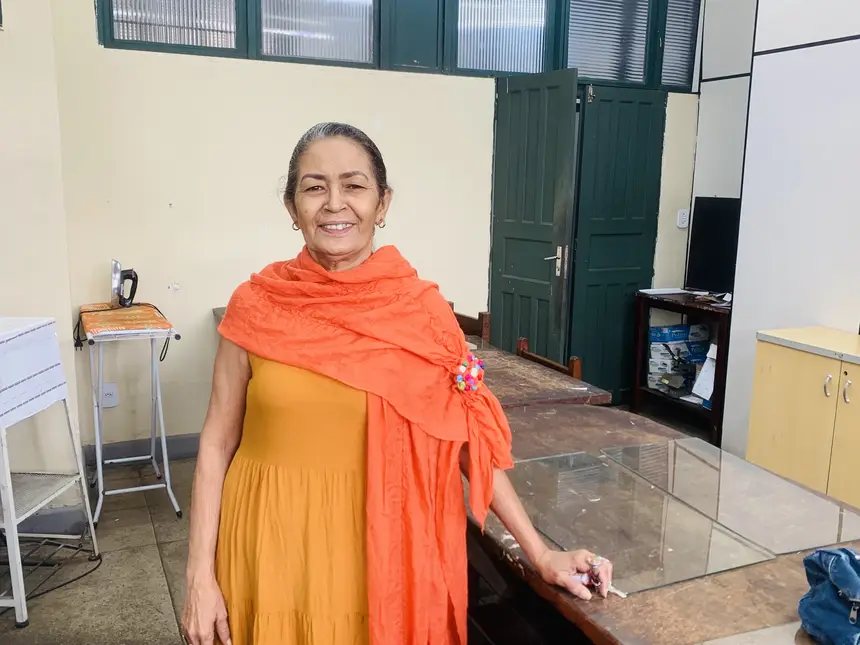
Carla Beltrão: art as mission and empowerment.
A woman who found in art not only a profession but a life mission. The journey of overcoming, courage, and affection of the Curro Velho instructor is a portrait of so many Brazilian mothers who, even in the face of adversity, transform their reality and that of others through sensitivity and creation.
Carla Beltrão arrived at Curro Velho through a friend, artist José Miguel Barros. At the time, recently separated, with three small children, and coming from a marriage she had left behind in Manaus (AM), where she worked as a bank employee. Upon moving to Belém, she faced financial and personal difficulties. It was during this moment of instability that art entered her life definitively.
Although she had been drawing and painting since childhood, it was at Curro Velho that her talent found a path and structure. As a student, she dedicated herself to various workshops. She was guided by great names in Pará art, such as João Gatto, Valter Bandeira, Alexandre Siqueira, and Dina Oliveira. The learning, according to her, was intense and transformative. “Here, at Curro Velho, I found myself. I was able to raise my children with dignity, working with what I love,” she recalls.
Her first job as an instructor happened at Funpapa (Papa João XXIII Foundation), replacing the very friend who introduced her to art. There, she began working with the elderly, teaching women who, most of the time, had no academic training but brought valuable manual knowledge: sewing, crochet, cooking. “They taught me a lot. Affection is the greatest teaching. I don’t have a diploma, but I study a lot. I need theory to exist in my practice.”
Today, with over 30 years of experience as an instructor, she is a reference in research with unconventional materials, such as synthetic fabrics and plastics. Her artistic work — which is also pedagogical — has been exhibited in galleries, grants, and even Biennials. “What no longer serves in my creative process, I transform into a teaching tool. I teach what I live. Teaching is planting and harvesting. And the return comes,” she says with pride.
She has participated in grants such as the Aldir Blanc Law and Paulo Gustavo. She has given workshops in São Paulo and throughout Pará. But it is at Curro Velho, where her heart lies. “It was here that I became who I am. And it is here that I transform other women, just as I was transformed. This is not a job; it is a mission.”
For Carla Beltrão, recognition comes not only from a solid career but from the impact she has on the lives of other women. “I teach, but I receive much more. Many do not know the power they have. I try to make them take ownership of it. Income comes as a result, naturally. Before that, comes self-esteem, freedom.”
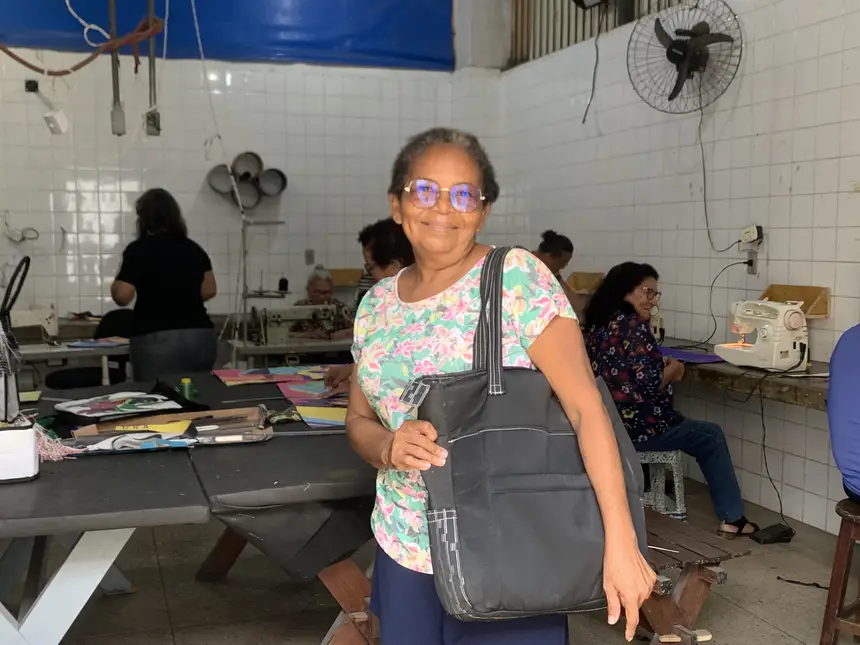
Rosa Silva: between needles, bags, and rebirth.
At 59 years old, Rosa Silva is another woman who found at Curro Velho not just a place of learning but a space of salvation. A mother of three children, Rosa arrived at Curro during one of the most difficult moments of her life: amid a severe depression. “A colleague brought me because I was just crying. I wanted to give up everything. I even thought about taking my life and my children's.”
The first contact with Curro Velho was accompanied: her husband and a niece took turns bringing her to the space due to the immense difficulty she had in leaving home alone. “I came here in front twice but always went back home because I felt something would happen to me, and there would be no one nearby to help me.”
The turning point came with the help of teacher Silene and the workshops. Rosa began to get involved in the activities and gradually found a reason to continue. “Here I overcame depression and discovered a profession. Curro Velho saved my life.”
Since then, Rosa has become a dedicated craftswoman. She learned to sew from scratch — she didn’t even know how to thread a needle — and today she makes bags and backpacks that she sells to neighbors, relatives, and acquaintances. With the support of her son, who studies marketing, she created her own brand and promoted her products on social media. “My children and grandchildren don’t buy backpacks; I make them. Today, I am proud of what I built with my own hands,”
With more than ten years of experience at Curro Velho, Rosa has participated in workshops on bags, paper, carpeting, screen printing, nets, and much more. “I don’t even know how many I’ve done. Here, besides learning, we share stories. Each module ends with a meeting where everyone tells why they are here. This heals. This unites.”
Curro Velho: where art is an instrument of social transformation
Beyond individual talent, the stories of Maria José, Carla Beltrão, and Rosa Silva show the collective power of Curro Velho as a public space for artistic training, especially aimed at the peripheral communities of Belém. The “Curro” is, in practice, a true cradle of popular Pará and Amazonian art.
It is at Curro that tens of thousands of mothers, as well as the younger audience, such as teenagers and children, develop manual skills, voice, and change their life stories for the better. In art, they find autonomy, self-esteem, and new possibilities for life. At Curro Velho, every stroke and every workshop are living testimonies that creating is also to resist and fight for better days.
Text by Maurício Carvalho, intern / Ascom FCP


